- Home
- Clive Cussler
Havana Storm Page 11
Havana Storm Read online
Page 11
He raced to the van and pried open a rear door. The interior was a jumbled mess, but he found Summer’s dive tank, BC, and mask. He slipped on the equipment and popped open the tank’s K valve. Something nagged at him and he retrieved the rope. One end was still secured to the doorframe, so he tied the loose end to a D ring on his BC. Hopping over the rail, he plunged into the cool lake.
He flicked on a small light attached to the BC and followed a trail of sediment particles rushing into the depths. Soon he felt the pull of the current. He kicked hard, accelerating with it while searching for Summer.
Still pinned to the grate, she had managed to pull herself to its upper edge. She had been underwater for more than a minute and was approaching a state of hypoxia.
Had there been a ladder or anything else to grip, she might have pulled herself clear of the suction, but all she found was the smooth face of the dam. A flood of desperate, confusing thoughts surged through her mind, pleading for her to try to escape. Perhaps there was hope at the other end of the spillway? She began prying her fingers off the grate when something caught her eye.
A faint light came from above. The light quickly grew brighter until it was joined by a figure flying toward her. Hope and agony struck simultaneously as she recognized Dirk rushing past her and through the open grate. Oddly, his eyes seemed to smile as he vanished into the black hole.
An instant later, she saw the light wavering in the spillway. Through its flashes, she detected a taut rope leading from her brother up to the surface. He reappeared a moment later, hoisting himself hand over hand until reaching the top of the spillway opening. Summer was a few feet to his left, frozen to the grate, her face turning blue.
Bracing his feet against the concrete surface, he pushed off with all his might, springing toward his sister. He released one hand from the rope and reached for her torso. Feeling his touch, she grabbed his hand, then wrapped her arms around his waist.
She yanked the regulator out of his mouth and jammed it into her own, sucking deep breaths. Dirk inflated his BC, pulled them a few feet up the rope, and waited for Summer to pass back the regulator. They shared the tank’s air as Dirk muscled them up the face of the dam. The spillway’s suction gradually waned until they could kick to the surface.
“That was a nasty surprise down there,” Dirk said after they broke into the sunshine.
“You’re telling me. I was about two seconds away from finding out what’s at the other end of the spillway.”
“Likely the spinning turbines of a hydroelectric plant.”
Summer shuddered at the fate of the gunman who had been sucked through the tunnel. “I think I’ve had my fill of this reservoir.”
She swam to the side of the dam, grabbed the rope, and hoisted herself up. Dirk followed suit, gladly ditching the tank and BC when he reached the van.
Summer gazed at the empty road that curved up the hill. “They shot and killed Dr. Torres, then stole the stone.”
“Any idea who they were?”
She shook her head. “There were three of them. One went in the water with me and was sucked through the spillway. They all made an effort to conceal their identities.”
“Professional artifact thieves who weren’t afraid to kill.”
Summer kicked at a small stone. “Dr. Torres was killed before he even had a chance to decipher the stone. Now it’s gone. I guess we’ll never know what it says.”
“Madero can still figure it out.”
“Not without the stone.”
“We still have something almost as good.” Dirk rummaged through the interior of the mangled van. A moment later, he crawled out clutching something.
Summer glanced at it and her face turned red. “No, you didn’t!”
Dirk could offer only a crooked grin as he held up the smashed housing of Summer’s new underwater camera.
22
The house phone rang and rang, and rang some more. St. Julien Perlmutter didn’t believe in answering machines, voicemail, or even cell phones. To his way of thinking, they were all intrusive annoyances. He particularly had no use for such devices on the rare occasion he left his Georgetown house, which usually meant he was eating at one of the capital’s finer dining establishments or engaging in archival research at a national library.
Fortunately for the caller, Perlmutter was at home, searching for an ancient tome on one of his many bookshelves. A behemoth of a man, he was perhaps the foremost maritime historian on the planet. His breadth of knowledge on ships and shipwrecks was legendary, while archivists drooled for the day Perlmutter would expire and his collection of letters, charts, journals, and logbooks might be subject to acquisition.
Dropping into a stout leather chair beside a rolltop desk, he reached for the phone on the tenth ring. Like most objects in his house, the handset was a marine relic, having once graced the bridge of the luxury liner United States.
“Perlmutter,” he answered in a gruff voice.
“St. Julien, it’s Summer. I hope I didn’t catch you in the middle of a meal.”
“Heavens, no.” His voice instantly warmed. “I was just searching for a firsthand account of Christopher Columbus’s fourth voyage to the New World.”
“A serendipitous era,” she said.
“The Age of Discovery always was. I had the pleasure of dining with your father recently. He said you and Dirk were working in Mexico.”
“Yes, we’re still here. And we could use your help. We’re trying to track down a Spanish ship that would have sailed from Veracruz in the early days of the conquest.”
“What was her name?”
“I’m afraid we don’t know. The only clue to her identity is a drawing from an Aztec codex, a copy of which I just emailed you.”
While Summer relayed the discovery of the codex and their travails with the Aztec stone, Perlmutter turned on his desktop computer and pulled up the image.
“Rather slim pickings,” he said. He studied the cartoonish image of a sailing ship with a monkey floating above its bow. “Do your Aztec experts have an interpretation?”
“Nothing definitive. The monkey may relate to the cargo, its route, or possibly a moniker for the ship’s name. We hope it’s the latter.”
“It’s possible, although during that time the Spanish were more apt to name their ships after religious icons. Fortunately, the records of the early Spanish voyages are fairly stout.”
“It’s the stone we’re after, so if you have any thoughts on where it may have ended up, we’d certainly be interested. It obviously has some deep significance to someone.”
“Regrettably, many among us will go to unsavory lengths in pursuit of a simple dollar. I’m sorry about your friend. I do hope you and Dirk will be careful.”
“We will.”
“As for the stone, I’ve been through all the major Spanish maritime museums and don’t recall any mention of such an artifact. I suppose it could have ended up in a private collection. I’ll make some inquiries.”
“Thanks, Julien. We’ll be sure to bring you back a bottle of your favorite tequila. Porfidio, if I remember.”
“Summer, you are an angel. Just don’t let your renegade father near the stuff or it will be a dry bottle before I get within sight of it.”
Perlmutter hung up the phone and stared at the image of the galleon on his computer. As he stroked his thick gray beard, his mind was miles away. Four thousand miles, to be exact.
“There’s only one place to start, my fine furry friend,” he said aloud to the image of the monkey. “Seville.”
23
Pitt gazed out the Sargasso Sea’s bridge window as a large container ship passed to the north. Another twenty miles beyond it lay the green coastline of southern Cuba. He wondered if the toxic effect of the mercury was already encroaching on its shores.
The NUMA research ship was approachi
ng the third dead zone identified by Yaeger. Pitt was bristling at their failure to identify a source. The second site, a hundred miles northeast of the Cayman Islands, had yielded no answers. This current area, like the last, showed extreme concentrations of methyl mercury, though at slightly decreased levels. Because the mercury was more dispersed, it had taken the scientists two days to narrow the peak toxicity to a four-square-mile area.
The muted sounds of efficiency on the bridge were broken by the deep voice of Al Giordino grumbling through an overhead speaker. “Stern deck. AUV is aboard. I repeat, AUV is aboard. Please proceed to the next grid area.”
Pitt beat the captain to the transmitter. “Bridge acknowledged. I’ll meet you in the theater in five minutes for today’s matinee.”
“You bring the popcorn, I’ll bring the Milk Duds. Stern deck out.”
By the time Pitt made his way to the wet lab on the main deck, Giordino was scrolling through the AUV’s sonar images on a large-panel display. Pitt noticed the seafloor was much more dramatic than the earlier sites, with rocky outcroppings and undulating hills and valleys.
He took a seat next to Giordino. “Your AUV got a workout on this run.”
“That’s what she’s made for.” Giordino pointed to an insert on the screen that portrayed the overall search grid and their relative location. “If the drift estimates are correct, there’s a high probability the source of the mercury release is within the quadrant just surveyed.”
“Let’s hope there’s a visible indicator this time,” Pitt said.
They reviewed nearly an hour of sonar images. While the seafloor did flatten, no man-made objects were apparent. Finally, Pitt noticed a shadow on the seabed and had Giordino halt the scrolling.
“Zoom in on that streak,” he said. “It looks like a linear path across the bottom.”
Giordino nodded and enlarged the image. “There’s an even pair of lines. They look too precise to be geography.”
“Let’s see where it goes,” Pitt said.
Giordino resumed scanning. The faint lines appeared in greater concentration in a section of the grid that dipped into a large depression. Pitt was tracking the change in depth when Giordino froze the image.
“Well, lookie here,” he said. “Somebody lost a boat.”
A dark, slender object rose from the bottom, casting a short shadow. Familiar linear tracks edged nearby.
“It looks long and lean,” Pitt said. “Perhaps a sailing boat that’s partially buried.”
“The AUV was running at a low frequency to scan a wider path, so the definition is on the weak side. That blur of a boat looks to be about thirty feet long.”
“Doubtful it’s our mercury source but maybe worth a look.”
Giordino resumed scrolling until the AUV’s records came to an end. Pitt noted the vehicle’s last recorded depth before it returned to the surface.
“I’m afraid that’s all she wrote,” Giordino said. “Some shadowy lines and a small boat.”
Pitt poked a finger at the now blank screen. “The AUV’s depth recorder indicated something of a depression in the middle of that grid. It may be nothing, but if that area is the source of the mercury contamination, it might be worth examining from a broader spectrum. Can a mosaic image of the entire survey grid be assembled? Or at least major blocks of it?”
“Piece of cake. All it will take is a little seat time at the keyboard.”
“Fine, but you better pass it off to someone else. You’ve got a more immediate job.”
“What’s that?”
“Firing up the ship’s submersible,” Pitt said. “I want to see for myself what’s happening down there.”
24
My friends, I am glad to see that you are well.”
Dr. Madero’s relief at seeing Dirk and Summer barely registered in his voice. His face formed a gaunt mask of shock and angst as he ushered them into the lab beside his university office.
“We feel terrible about Dr. Torres,” Summer said. “If I hadn’t found the codex . . .”
“No, no, it is a remarkable find. Besides, I can say with certainty that Miguel died doing what he loved best.” His voice turned nearly to a whisper. “I’m only sorry that the police have been unable to apprehend the killers.”
“They fished one of them out of the river below the hydroelectric plant,” Dirk said. “Unfortunately, he was so pulverized, there wasn’t much left to identify. Do you have any idea who would have killed Dr. Torres for the stone?”
Madero shook his head and grimaced. “It could be forces from anywhere, maybe even outside the country. We’ve had lots of problems around Tula with the black market trade of Toltec relics. The thieves probably don’t even know what they have.”
“I got the distinct impression,” Summer said, “they knew exactly what they were after.”
“I will remain hopeful that the stone will be recovered,” Madero said in a weak voice, “and Miguel’s death avenged.”
“At least we have the photographs, even if my camera will never work again.” She shot her brother a cross gaze.
“I thought it was a disposable,” Dirk said.
“Yes, it is something.” Madero retrieved a folder with Summer’s photographs of the stone. He displayed one that had been enlarged to show details of the glyph.
“Can you tell us what the stone represents?” Summer asked.
“Much along the lines of the codex.” Enthusiasm returned to his voice. “As you can see from the alignment of the glyphs, the stone was cut or broken in half, your piece representing the left-hand segment. The angular designs along the perimeter represent the sun, which symbolizes life and the present era in Aztec lore. The design is very similar to the Aztec calendar stone, except that the interior glyphs are carved in a top-to-bottom narrative rather than concentric circles.”
“Do the glyphs match those on the calendar stone?” Dirk asked.
“More similar to the Stone of Tizoc. It was a sacrificial altar stone, elaborately carved, but also of a commemorative nature. Yours appears to be carved from the same material, a volcanic rock called andesite. While the altar stone is full of proper names, titles, and places, your stone represents more of a narrative tale.”
Summer looked at Madero with anticipation. “And what exactly is the tale?”
“Regrettably, we only have half, but we can make some speculations.” Madero took a deep breath and pointed to the top of the stone, where several rows of glyphs filled the surface within the sun border.
“Here we see skeletal glyphs, which indicate death and sorrow. Like the codex, it is not clear if this is the result of some regional battle or the arrival of the Spaniards. Then we find an image of Huitzilopochtli, the ancestral deity and war god. He appears to be directing an important procession of some sort, the meaning of which is evidently on the other half. And both the Eagle and Jaguar Warriors again signify an importance to the traveling group.”
Madero rubbed his eyes, then turned back to the image. “Next we find some glyphs indicating water and fishing, which are interspersed with our familiar tracks, indicating travels. The interval spacing suggests to me a voyage, as the codex indicated, that possibly lasted over a week. Then things get interesting.”
At the bottom of the glyphs was a rounded blank space along the stone’s broken edge. Madero pointed out a jagged line running beneath it and two irregular circles inside.
“This is some sort of map. It is my belief they carved an image of their destination. From the portion we can see, it was some sort of bay that contained a number of islands. Unfortunately, we would need the other half of the stone to complete the picture.”
“Could that simply be a rendition of Tenochtitlan?” Dirk asked.
“From what we know, the shape of Lake Texcoco doesn’t seem to match. I had the same thought, particularly when I saw this.”
/> He pointed to the image of a bird’s head and neck that ran off the broken edge.
“A flamingo?” Summer asked.
“Or maybe a crane,” Madero said, “signifying Aztlán.”
“Professor Torres told us about Aztlán,” Dirk said. “It was the Aztecs’ ancestral homeland, described as an island within a lagoon.”
“Aztlán, the ‘place of the cranes,’ believed to be somewhere north of the Aztec empire, from where the Mexica originally emigrated.” Madero stared at the stone. “I may be falsely extrapolating, but along with the reference to Huitzilopochtli, the message seems clear. A group of important Aztecs made a pilgrimage to Aztlán. The codex would seem to confirm the trip was made across water and that the voyage was successful.”
“Why the pilgrimage?” Summer asked. “And what were they transporting?”
Madero shrugged. “With only half the stone, we’ll be left with an eternal mystery.”
“It may not be for long,” Dirk said.
“What are you saying?”
“We have a lead on the other half of the stone.”
Madero turned pale and Summer laughed.
“It’s still a long shot,” she said. “I consulted a family friend in Washington, St. Julien Perlmutter, who’s an expert marine historian. He has an associate at the General Archives of the Indies in Seville, who produced a registry of ships that sailed to the New World in the early sixteenth century. One of the ships was named the Bad Bear.”
“I don’t understand,” Madero said.
“I didn’t either, at first,” she said. “I sent Perlmutter a copy of the codex page that showed the galleon with the glyph of the monkey. He went through the ship rolls, searching for some connection to a monkey or other primate, but came up empty. Fortunately, Perlmutter’s a stubborn man and he kept looking for an angle. He found it when he researched the word for monkey in Nahuatl.”

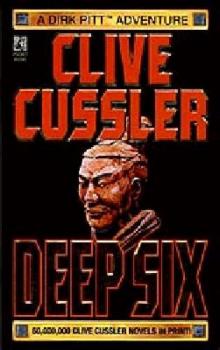 Deep Six
Deep Six Odessa Sea
Odessa Sea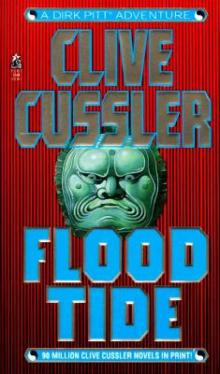 Flood Tide
Flood Tide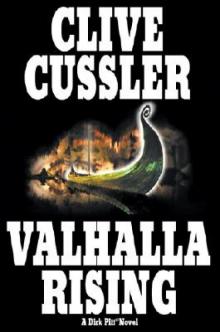 Valhalla Rising
Valhalla Rising Thriller 2
Thriller 2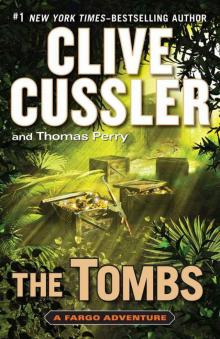 The Tombs
The Tombs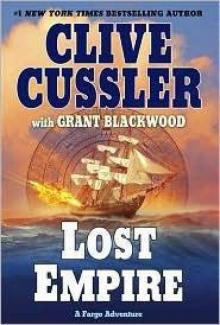 Lost Empire
Lost Empire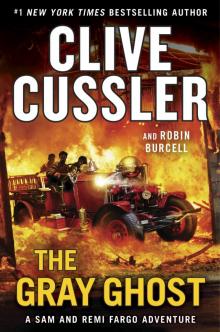 The Gray Ghost
The Gray Ghost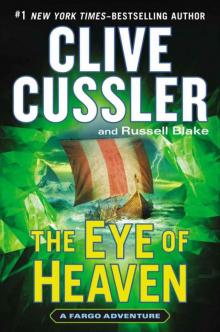 The Eye of Heaven
The Eye of Heaven Polar Shift
Polar Shift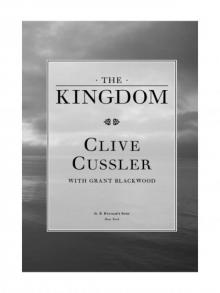 The Kingdom
The Kingdom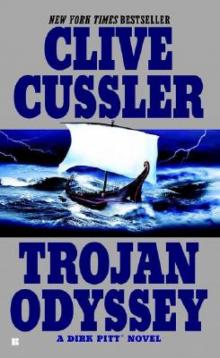 Trojan Odyssey
Trojan Odyssey Shadow Tyrants
Shadow Tyrants Nighthawk
Nighthawk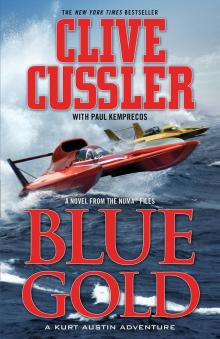 Blue Gold
Blue Gold Serpent
Serpent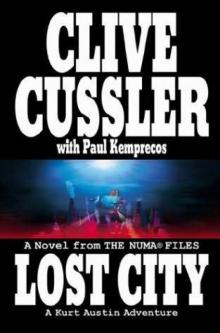 Lost City
Lost City The Gangster
The Gangster White Death
White Death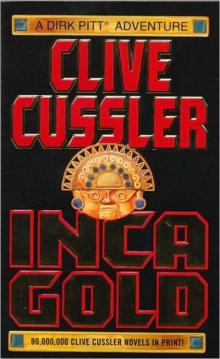 Inca Gold
Inca Gold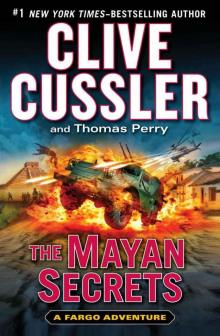 The Mayan Secrets
The Mayan Secrets The Pharaoh's Secret
The Pharaoh's Secret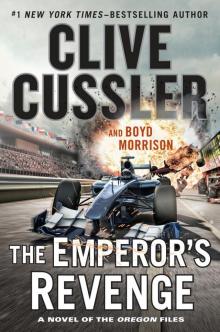 The Emperor's Revenge
The Emperor's Revenge Corsair
Corsair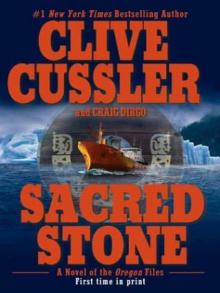 Sacred Stone
Sacred Stone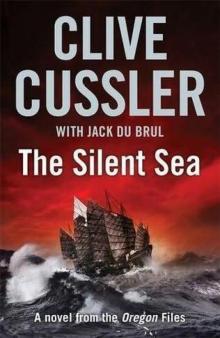 The Silent Sea
The Silent Sea The Rising Sea
The Rising Sea Black Wind
Black Wind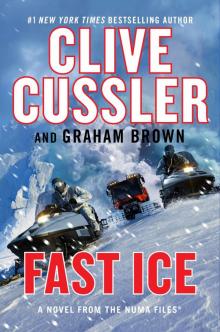 Fast Ice
Fast Ice Ghost Ship
Ghost Ship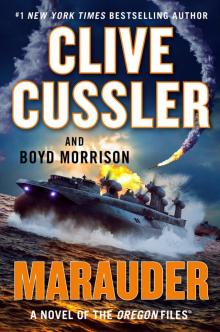 Marauder
Marauder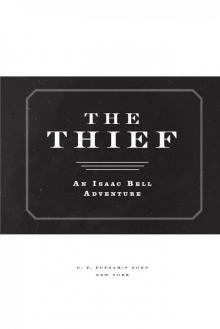 The Thief
The Thief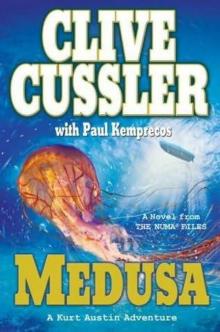 Medusa
Medusa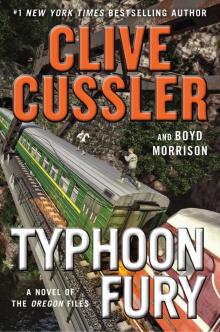 Typhoon Fury
Typhoon Fury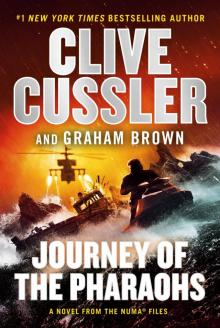 Journey of the Pharaohs
Journey of the Pharaohs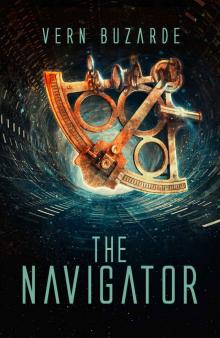 The Navigator
The Navigator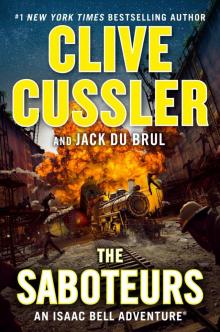 The Saboteurs
The Saboteurs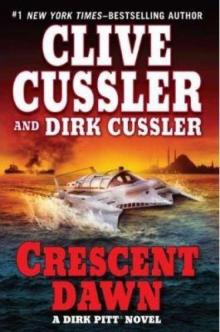 Crescent Dawn
Crescent Dawn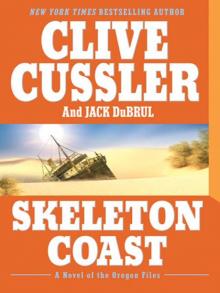 Skeleton Coast
Skeleton Coast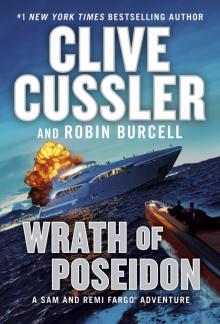 Wrath of Poseidon
Wrath of Poseidon The Mediterranean Caper
The Mediterranean Caper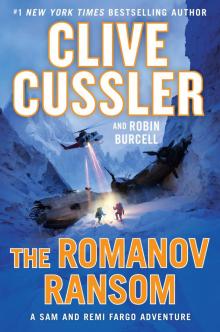 The Romanov Ransom
The Romanov Ransom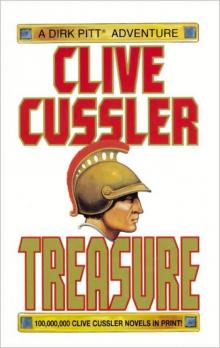 Treasure
Treasure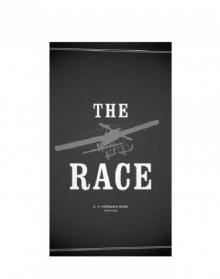 The Race
The Race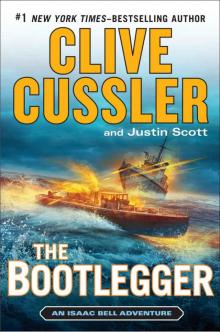 The Bootlegger
The Bootlegger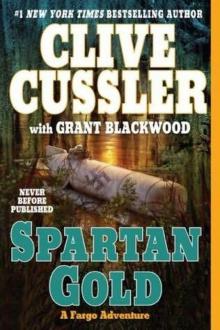 Spartan Gold
Spartan Gold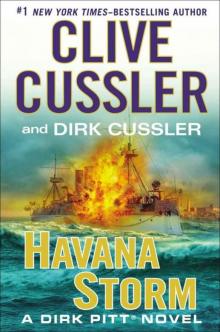 Havana Storm
Havana Storm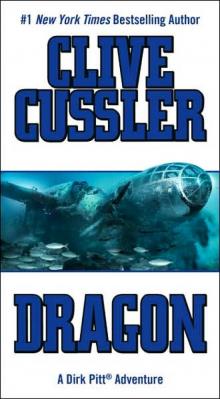 Dragon
Dragon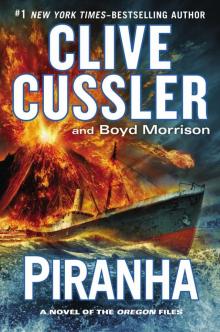 Piranha
Piranha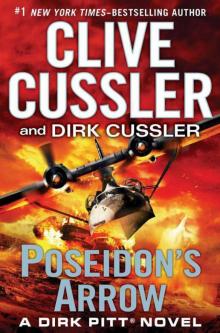 Poseidon's Arrow
Poseidon's Arrow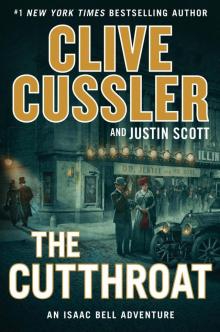 The Cutthroat
The Cutthroat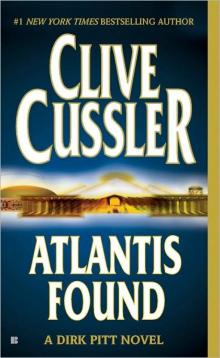 Atlantis Found
Atlantis Found The Jungle
The Jungle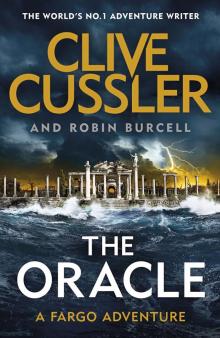 The Oracle
The Oracle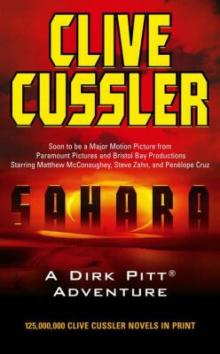 Treasure / Dragon / Sahara: Clive Cussler Gift Set
Treasure / Dragon / Sahara: Clive Cussler Gift Set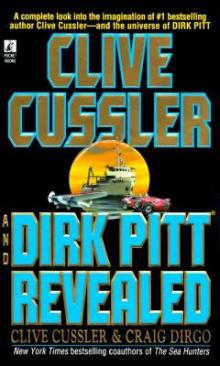 Clive Cussler and Dirk Pitt Revealed
Clive Cussler and Dirk Pitt Revealed The Sea Hunters
The Sea Hunters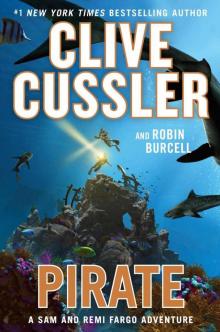 Pirate
Pirate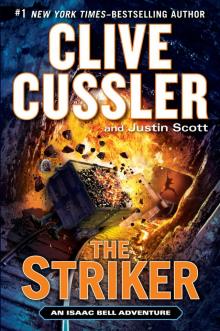 The Striker
The Striker Plague Ship
Plague Ship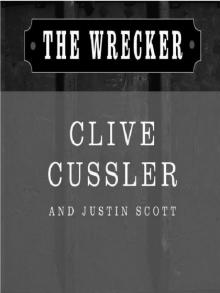 The Wrecker
The Wrecker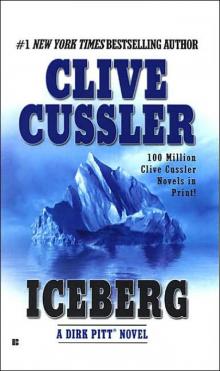 Iceberg
Iceberg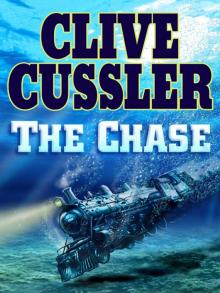 The Chase
The Chase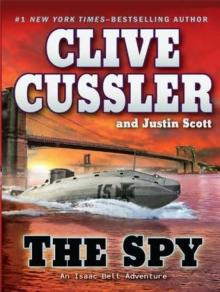 The Spy
The Spy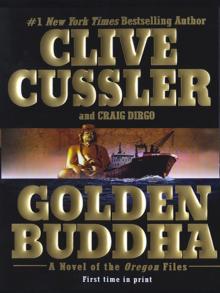 Golden Buddha
Golden Buddha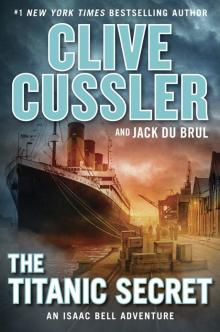 The Titanic Secret
The Titanic Secret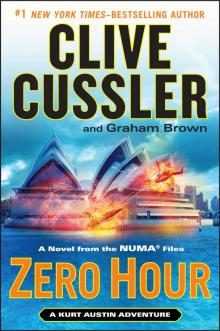 Zero Hour
Zero Hour Fire Ice
Fire Ice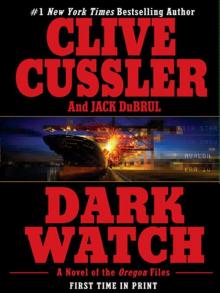 Dark Watch
Dark Watch The Storm
The Storm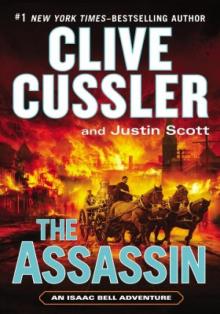 The Assassin
The Assassin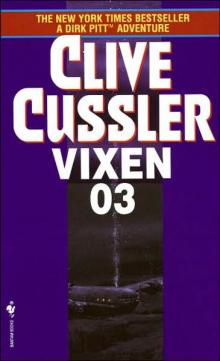 Vixen 03
Vixen 03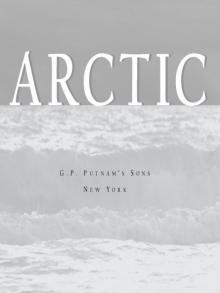 Arctic Drift
Arctic Drift Night Probe!
Night Probe! Cyclops
Cyclops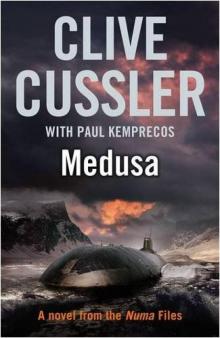 Medusa nf-8
Medusa nf-8 Shock Wave dp-13
Shock Wave dp-13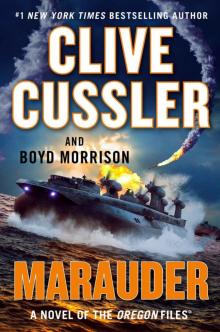 Marauder (The Oregon Files)
Marauder (The Oregon Files)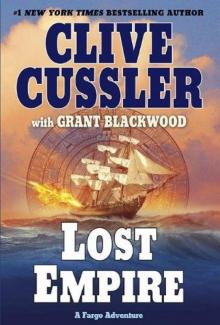 Lost Empire fa-2
Lost Empire fa-2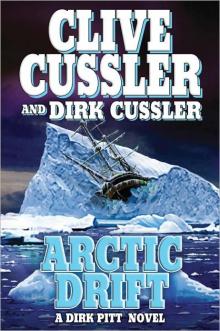 Arctic Drift dp-20
Arctic Drift dp-20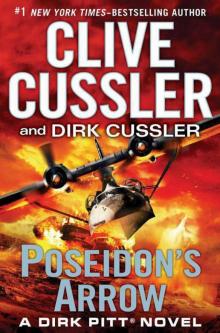 Dirk Pitt 22 - Poseidon's Arrow
Dirk Pitt 22 - Poseidon's Arrow Treasure of Khan dp-19
Treasure of Khan dp-19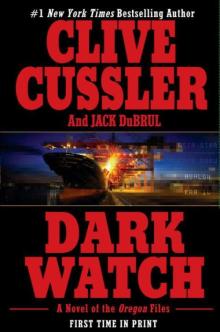 Dark Watch of-3
Dark Watch of-3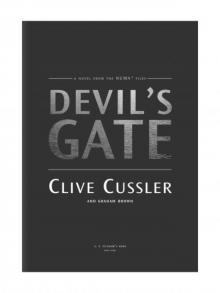 Devil's Gate
Devil's Gate The Sea Hunters II: More True Adventures with Famous Shipwrecks
The Sea Hunters II: More True Adventures with Famous Shipwrecks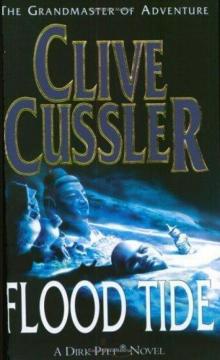 Flood Tide dp-14
Flood Tide dp-14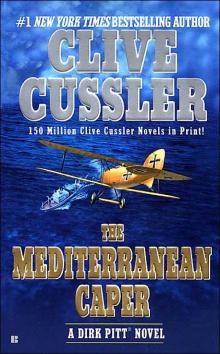 The Mediterranean Caper dp-2
The Mediterranean Caper dp-2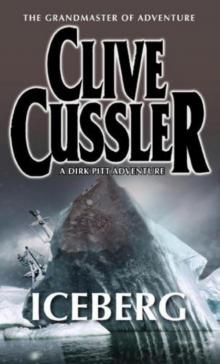 Iceberg dp-3
Iceberg dp-3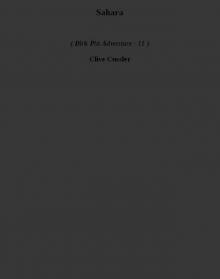 Sahara dpa-11
Sahara dpa-11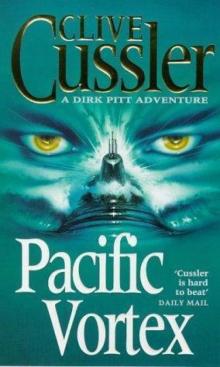 Pacific Vortex! dp-1
Pacific Vortex! dp-1 Deep Six dp-7
Deep Six dp-7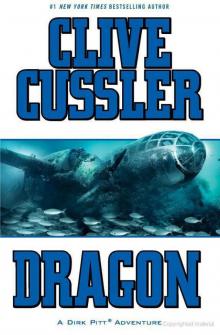 Dragon dp-10
Dragon dp-10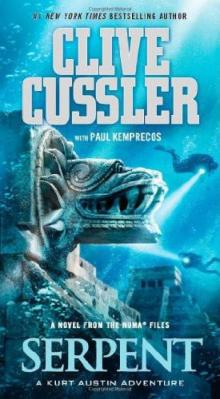 Serpent nf-1
Serpent nf-1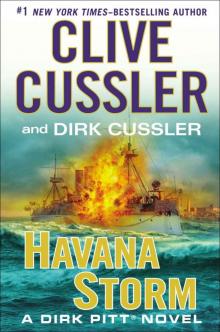 Havana Storm (Dirk Pitt Adventure)
Havana Storm (Dirk Pitt Adventure)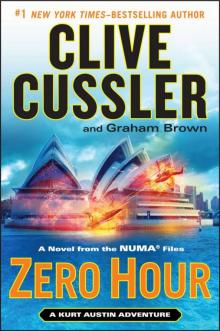 Zero Hour nf-11
Zero Hour nf-11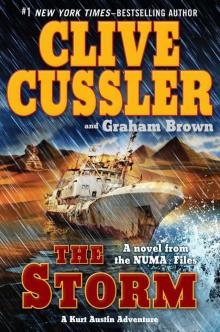 The Storm nf-10
The Storm nf-10 The Thief ib-5
The Thief ib-5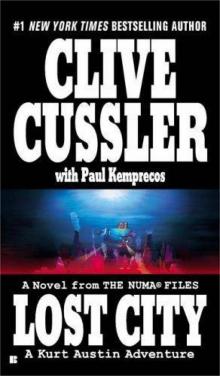 Lost City nf-5
Lost City nf-5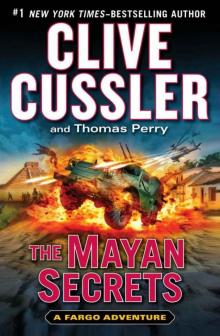 The Mayan Secrets fa-5
The Mayan Secrets fa-5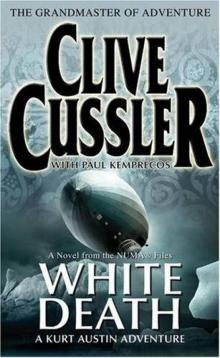 White Death nf-4
White Death nf-4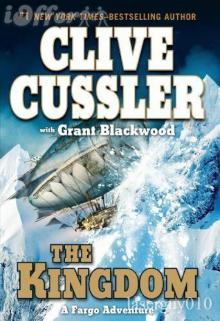 The Kingdom fa-3
The Kingdom fa-3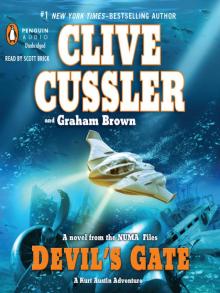 Devil's Gate nf-9
Devil's Gate nf-9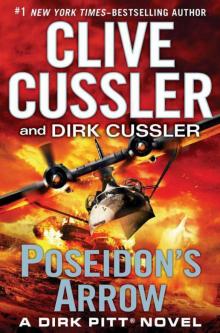 Poseidon's Arrow dp-22
Poseidon's Arrow dp-22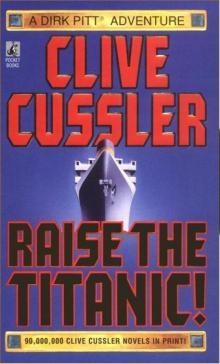 Raise the Titanic dp-4
Raise the Titanic dp-4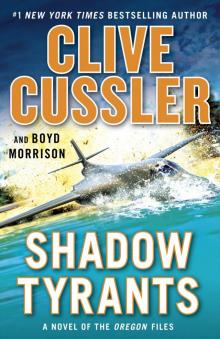 Shadow Tyrants--Clive Cussler
Shadow Tyrants--Clive Cussler Sacred Stone of-2
Sacred Stone of-2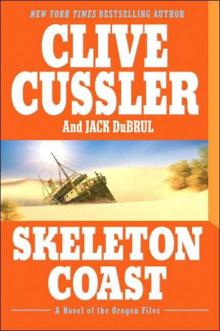 Skeleton Coast tof-4
Skeleton Coast tof-4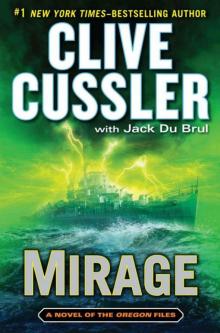 Mirage tof-9
Mirage tof-9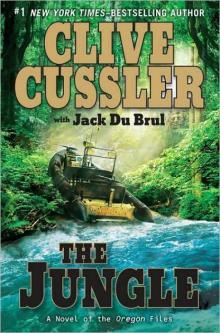 The Jungle of-8
The Jungle of-8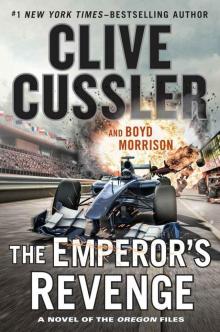 The Emperor's Revenge (The Oregon Files)
The Emperor's Revenge (The Oregon Files)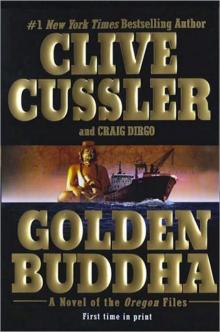 Golden Buddha of-1
Golden Buddha of-1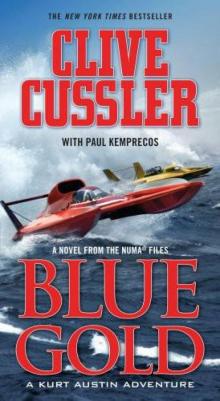 Blue & Gold
Blue & Gold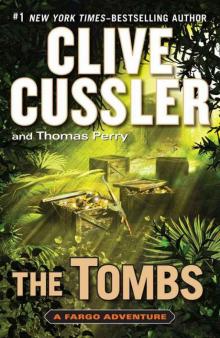 The Tombs fa-4
The Tombs fa-4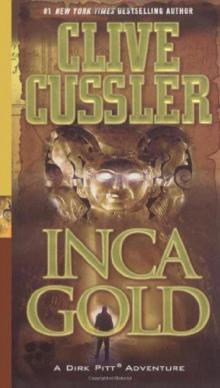 Inca Gold dp-12
Inca Gold dp-12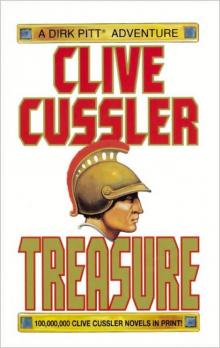 Treasure dp-9
Treasure dp-9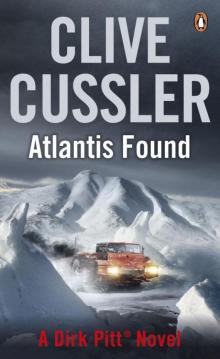 Atlantis Found dp-15
Atlantis Found dp-15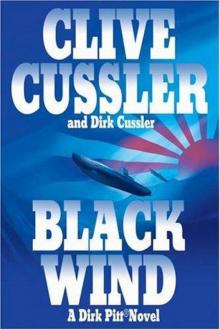 Black Wind dp-18
Black Wind dp-18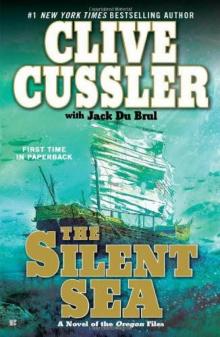 the Silent Sea (2010) tof-7
the Silent Sea (2010) tof-7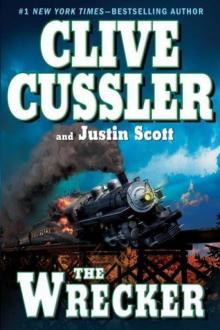 The Wrecker ib-2
The Wrecker ib-2 Fire Ice nf-3
Fire Ice nf-3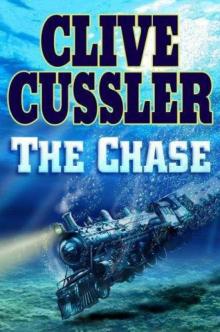 The Chase ib-1
The Chase ib-1 Sahara
Sahara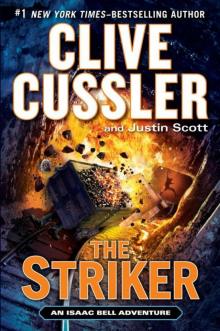 The Striker ib-6
The Striker ib-6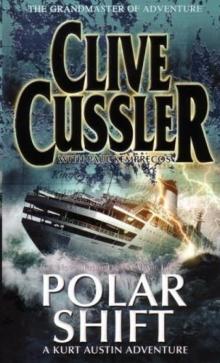 Polar Shift nf-6
Polar Shift nf-6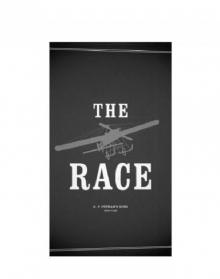 The Race ib-4
The Race ib-4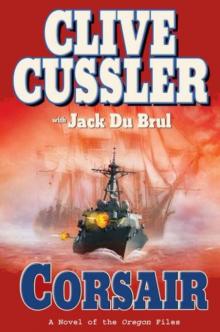 Corsair of-6
Corsair of-6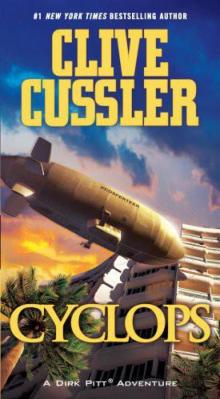 Cyclops dp-8
Cyclops dp-8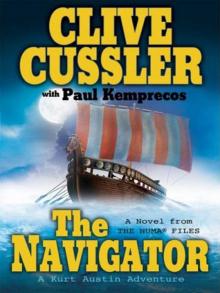 The Navigator nf-7
The Navigator nf-7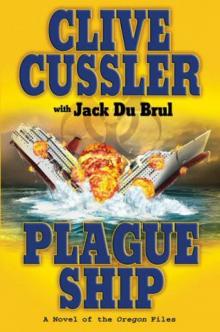 Plague Ship tof-5
Plague Ship tof-5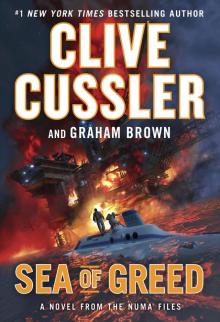 Sea of Greed
Sea of Greed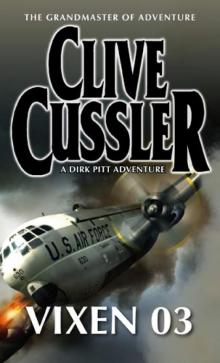 Vixen 03 dp-5
Vixen 03 dp-5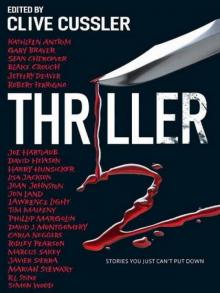 Thriller 2: Stories You Just Can't Put Down
Thriller 2: Stories You Just Can't Put Down